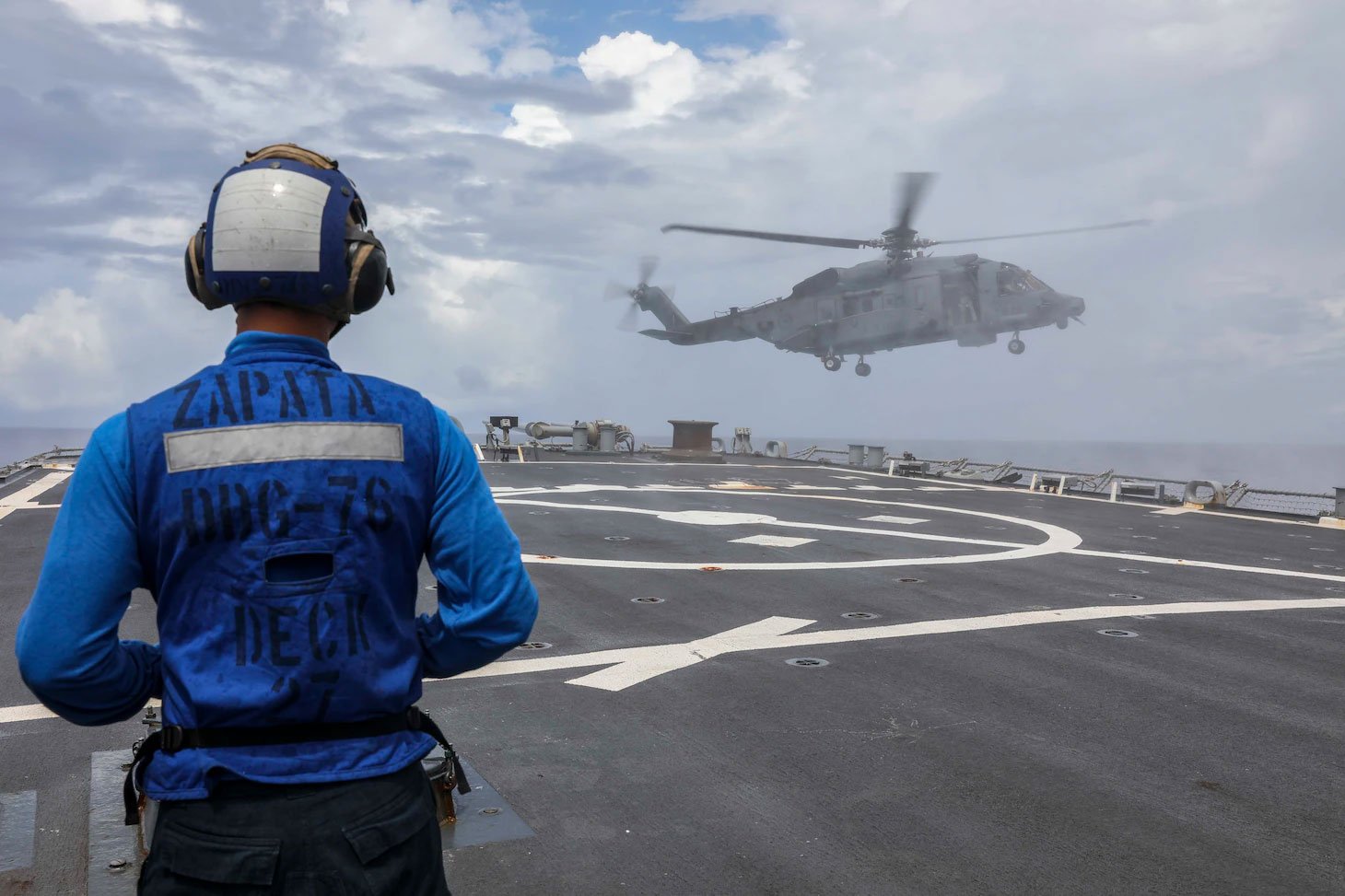Maritime forces from Canada, Japan, and the United States concluded exercises in the South China Sea in support of Royal Australian Navy forces, Oct. 17.
This is the first time all four nations have trained together in the South China Sea exercising complex, maritime operations in the region.
This exercise builds on the previous bilateral and trilateral exercises from recent months conducted in the South China Sea. Throughout the naval exercises, participants trained together and conducted integrated operations designed to increase the allies’ collective ability to maintain maritime security and readiness to respond to any regional contingency. Integrated events included surface, subsurface, and air defense exercises that included Maritime Patrol Reconnaissance Aircraft (MPRA) from several participating nations.
Representing Commander, Task Force 71 are U.S. Navy Arleigh Burke-class guided-missile destroyers USS Milius (DDG 69) and USS Higgins (DDG 76).
“Working with our Australian, Canadian and Japanese allies in the South China Sea has been an invaluable experience and opportunity,” said Cmdr. Matthew Hays, commanding officer of USS Milius. “Combined maritime exercises help us strengthen interoperability and increase collective war-fighting readiness. It was great to be able to work with these 3 fine navies and to demonstrate our unwavering strong support for their increasing role in the region and our commitment to a free and open Indo-pacific.”
Professional engagement and cooperation with allies and partners is the foundation of regional stability, which fosters peace and prosperity for all nations.
Australia was represented by the Royal Australian Navy, HMAS Arunta (FFH 151), and HMAS Hobart (DDG 39).
Japan was represented by the JS Suzutsuki (DD 117) and JS Kirisame (DD 104).
Representing Canada was the Royal Canadian Navy Halifax-class frigate HMCS Winnipeg (FFH 338).
“HMCS Winnipeg’s deployment in the Indo-Pacific on Operation PROJECTION is aimed at conducting forward naval presence operations in the region as well as participating in cooperative deployments and naval exercises with allied and partner nations,” said Commander Annick Fortin, commanding officer of HMCS Winnipeg. “These exercises are an excellent example; as they demonstrate our interoperability with other navies and provides opportunities to learn as well as prove our abilities to work seamlessly together. It is a prime example of our motto “One with the strength of many”; working together, we are stronger.”
U.S. 7th Fleet is the largest forward-deployed fleet in the world, and with the help of a network of alliances and partners from 35 other maritime-nations, the U.S. Navy has operated in the Indo-Pacific region for more than 70 years, providing credible, ready forces to help preserve peace and prevent conflict.

